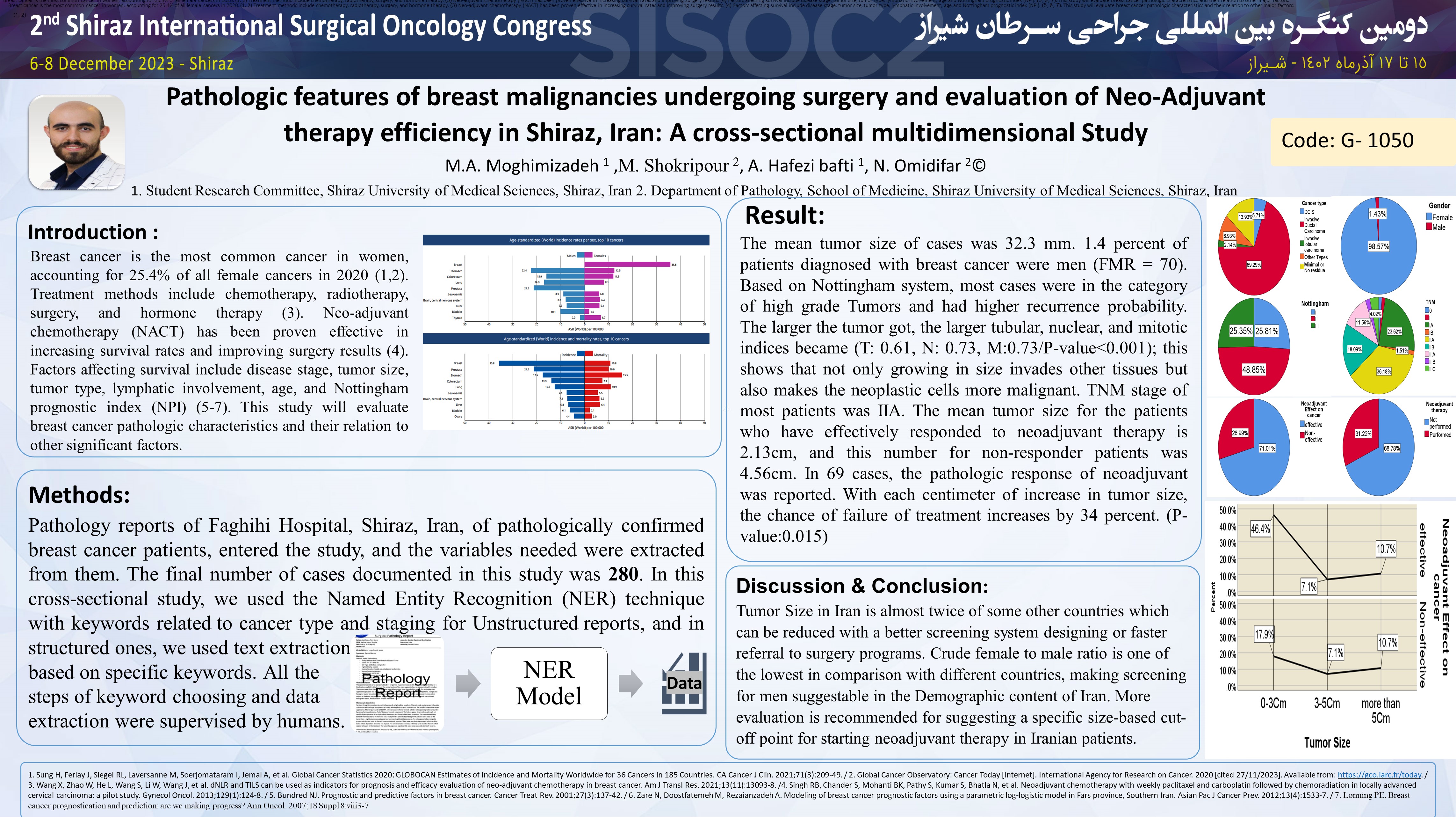Pathologic features of breast malignancies undergoing surgery and evaluation of Neo-Adjuvant therapy efficiency in Shiraz,Iran: A cross-Sectional multidimensional Study
Code: G-1050
Authors: Mohammadali Moghimizadeh ℗, Mansoureh Shokripour, Aref Hafezi Bafti, Navid Omidifar ©
Schedule: Wednesday 2023-12-06 10:45 on Unit Panel C
Download: Download Poster
Abstract:
Abstract
Breast cancer is the most common cancer in women, accounting for 25.4% of all female cancers in 2020. Treatment methods include chemotherapy, radiotherapy, surgery, and hormone therapy. Neo-adjuvant chemotherapy has been proven effective in increasing survival rates and improving surgery results. Factors affecting survival include disease stage, tumor size, tumor type, lymphatic involvement, age, and Nottingham prognostic index. This study will evaluate breast cancer pathologic characteristics and their relation to other major factors. Method: Pathological reports of Faghihi Hospital, Shiraz, Iran, of pathologically confirmed breast cancer patients were examined, and the variables needed were extracted from it. The final number of cases entered in this study was 280. In this cross-sectional study, we used the Named Entity Recognition (NER) technique with keywords related to cancer type and staging; for unstructured reports and structured parts, we used text extraction after specific keywords. A human finally supervised all the steps of keyword choosing and extraction. Result: The mean tumor size of cases was 32.3 mm. 1.4 percent of patients diagnosed with breast cancer were men (FMR = 70). Based on the Nottingham system, most cases were in the category of higher grades Tumors and had higher recurrence probability. The larger the tumor gets, the larger tubular, nuclear, and mitotic indices become (T: 0.61, N: 0.73, M:0.73 – P-value0.001), which shows that not only growing in size invades other tissues but also makes the neoplastic cells more malignant. TNM stage of most patients was IIA. The mean tumor size for the patients who have effectively responded to neoadjuvant therapy is 2.13cm, and this number for non-responder patients was 4.56cm. With each centimeter of increase in tumor size, the chance of failure of treatment increases by 34 percent. (P-value:0.015) Conclusion: Tumor Size in Iran is almost twice of some other countries, which can be reduced with a better screening system design. Crude female to male ratio is one of the lowest in comparison with different countries, making screening for men suggestable in the Demographic content of Iran. More evaluation is recommended for suggesting a specific size-based cut-off point for starting neoadjuvant therapy.
Keywords
Breast cancer, Neoadjuvant Chemotherapy, TNM staging, Nottingham Score, predictive factors
Comments (0)
Post a comment
Post comment is closed by admin.
